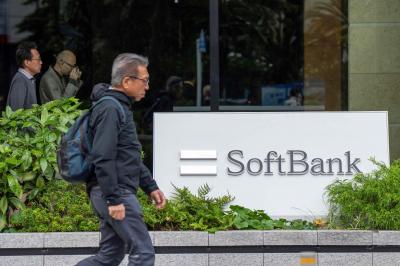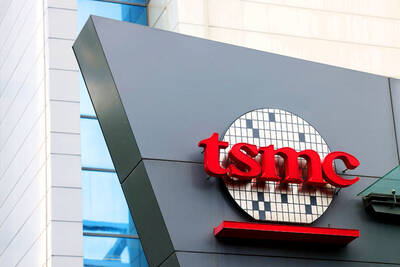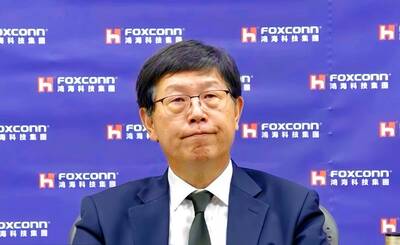The interest rate cycle has turned in the Asia-Pacific region, but increases in benchmark borrowing costs will be gradual in order not to nip fragile economic recovery in the bud, analysts say.
Australia’s surprise quarter-point hike in its key cash rate to 3.25 percent last week “crystallized the fact that the tide of monetary policy” has switched course, said Matt Robinson, an economist at Moody’s Economy.com.
The move by Australia — the first major economy to boost borrowing costs since the global financial crisis began — “likely kicks off rate hikes across the region,” but monetary tightening will be gradual, Robinson said.
Even though Australia, its economy stoked by exports to supply China’s keen resource appetite, has been quick to start unwinding monetary stimulus, most analysts believe the next rate rises in the region will come next year.
Central bankers in emerging market giants India and China and elsewhere in the region are keeping a wary watch on indicators pointing to rebounding economic strength and resurgent inflationary pressures.
Low-cost loans have provided a vital stimulus, and policymakers are fearful of choking nascent growth by hiking rates too soon and too fast.
“It’s a tough decision at this juncture to know how to unwind all the monetary stimulus — when to time the stimulus exit,” said Dharmakirti Joshi, principal economist at leading Indian ratings firm Crisil.
Analysts had bet that South Korea, recovering from the global slowdown faster than many other nations thanks in part to an export rebound, could be next to jack up rates. Some had forecast the hike could come as early as next month.
But last week South Korea’s central bank kept its benchmark rate unchanged and said it needed more time to assess the economy’s underlying strength.
The “less hawkish” tone of the South Korean central bank’s comments suggested that there would only be a “gradual and moderate tightening in 2010,” Goldman Sachs economist Goohoon Kwon said.
In India, tipped by some analysts as another country likely to tighten monetary policy sooner than others due to an inflation flare-up, the government has argued that raising rates too early could stall economic recovery.
Reserve Bank of India Governor Duvvuri Subbarao acknowledged the challenge last week, saying the bank must manage “the trade-offs” between buttressing growth by holding down borrowing costs and keeping a lid on inflation.
China also looks set to keep rates on hold until next year, many analysts say.
“Since inflation is not an immediate threat and the external outlook remains precarious, we do not think consensus can form quickly to allow an overall tightening of policy,” UBS economist Wang Tao (王濤) said recently in a note.
For the rest of the Asia-Pacific region, from Taiwan and Singapore to Thailand and Indonesia, most analysts are wagering the first rate hikes will be next year.
The withdrawal of monetary stimulus will be slow to ensure recovery remains on track, especially with the US and many European economies yet to emerge from recession and Japan, the biggest economy in Asia, still feeble.
“Raising rates may snap the green shoots. This is not a good moment to do so,” said Norman Yin (殷乃平), a banking professor at National Chengchi University in Taipei.

Japanese technology giant Softbank Group Corp said Tuesday it has sold its stake in Nvidia Corp, raising US$5.8 billion to pour into other investments. It also reported its profit nearly tripled in the first half of this fiscal year from a year earlier. Tokyo-based Softbank said it sold the stake in Silicon Vally-based Nvidia last month, a move that reflects its shift in focus to OpenAI, owner of the artificial intelligence (AI) chatbot ChatGPT. Softbank reported its profit in the April-to-September period soared to about 2.5 trillion yen (about US$13 billion). Its sales for the six month period rose 7.7 percent year-on-year

CRESTING WAVE: Companies are still buying in, but the shivers in the market could be the first signs that the AI wave has peaked and the collapse is upon the world Taiwan Semiconductor Manufacturing Co (TSMC, 台積電) yesterday reported a new monthly record of NT$367.47 billion (US$11.85 billion) in consolidated sales for last month thanks to global demand for artificial intelligence (AI) applications. Last month’s figure represented 16.9 percent annual growth, the slowest pace since February last year. On a monthly basis, sales rose 11 percent. Cumulative sales in the first 10 months of the year grew 33.8 percent year-on-year to NT$3.13 trillion, a record for the same period in the company’s history. However, the slowing growth in monthly sales last month highlights uncertainty over the sustainability of the AI boom even as

AI BOOST: Next year, the cloud and networking product business is expected to remain a key revenue pillar for the company, Hon Hai chairman Young Liu said Manufacturing giant Hon Hai Precision Industry Co (鴻海精密) yesterday posted its best third-quarter profit in the company’s history, backed by strong demand for artificial intelligence (AI) servers. Net profit expanded 17 percent annually to NT$57.67 billion (US$1.86 billion) from NT$44.36 billion, the company said. On a quarterly basis, net profit soared 30 percent from NT$44.36 billion, it said. Hon Hai, which is Apple Inc’s primary iPhone assembler and makes servers powered by Nvidia Corp’s AI accelerators, said earnings per share expanded to NT$4.15 from NT$3.55 a year earlier and NT$3.19 in the second quarter. Gross margin improved to 6.35 percent,

FAULTs BELOW: Asia is particularly susceptible to anything unfortunate happening to the AI industry, with tech companies hugely responsible for its market strength The sudden slump in Asia’s technology shares last week has jolted investors, serving as a stark reminder that the world-beating rally in artificial intelligence (AI) and semiconductor stocks might be nearing a short-term crest. The region’s sharpest decline since April — triggered by a tech-led sell-off on Wall Street — has refocused attention on cracks beneath the surface: the rally’s narrow breadth, heavy reliance on retail traders, and growing uncertainty around the timing of US Federal Reserve interest-rate cuts. Last week’s “sell-off is a reminder that Asia’s market structure is just more vulnerable,” Saxo Markets chief investment strategist Charu Chanana said in